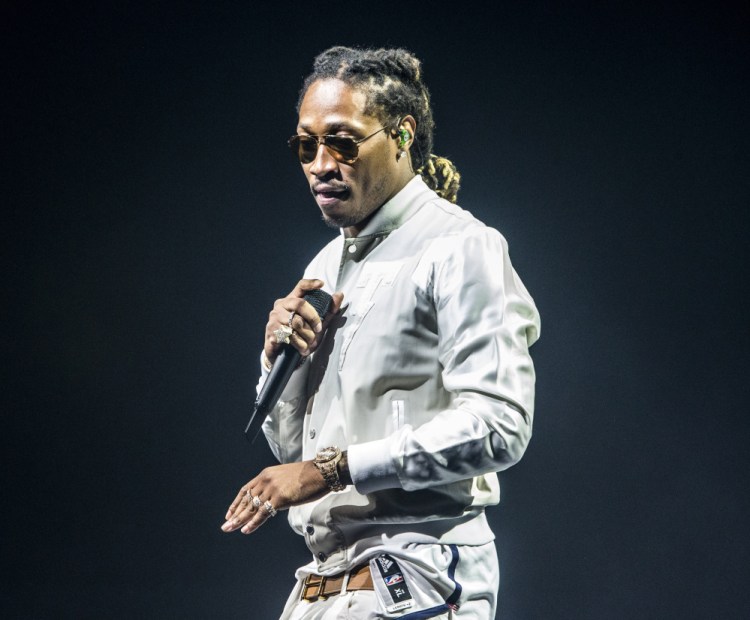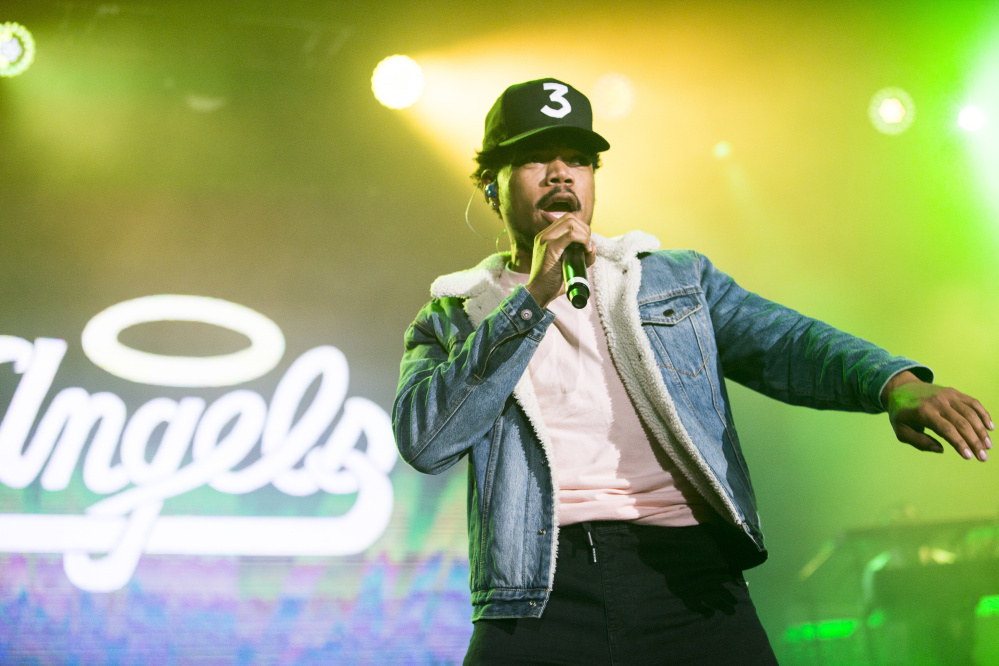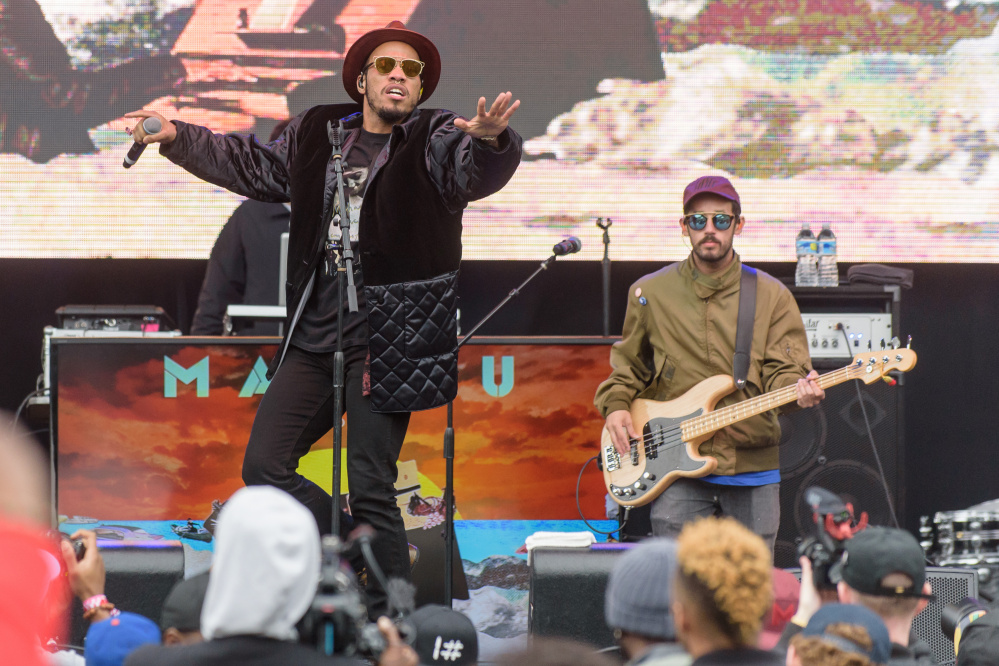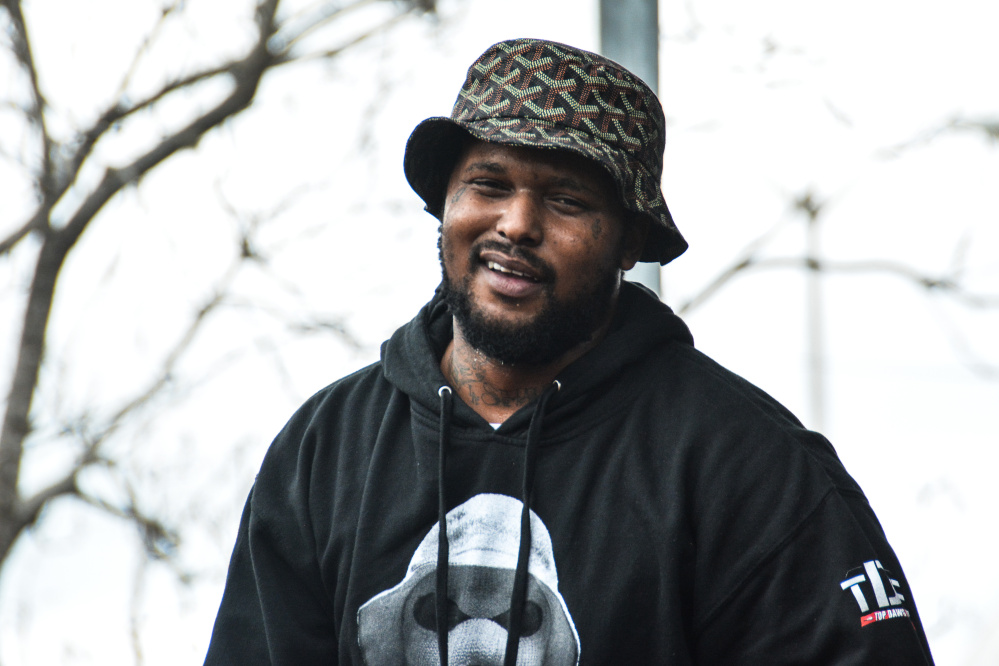Somehow, somewhere, there are listeners who still say that rap music isn’t really music. I say that these people aren’t really listening. As the prevailing pop idiom of our time, rap’s indomitable wild styles have recently grown so wild and so stylish, the idea that anyone still needs to defend the legitimacy of the art form feels insane.
Everything else in America feels insane, too. We’ll be frog-marched to the ballot box next month, wondering how our votes might rectify economic inequality or stop police from killing unarmed black men with such horrific frequency. Rap music provides the richest sonic response to these civic anxieties. It isn’t a style so much as an omni-style – one that allows artists to say whatever they feel over beats made from whatever they can find. We hear it most directly in Kanye West, who rhymes imaginatively (and carelessly) about his altruism (and narcissism), flanked by gospel choirs (and godless rhythm machines) all at once.
And West only hints at contemporary rap’s astonishing sweep. Teeming with disparate messages, meanings, methods and moods, rap’s cumulative charge speaks to the madness of the moment while expressing the complexity of the people it speaks for. Today’s rappers contain multitudes, and the humanity bouncing off their tongues sounds like the music of a new golden age.
Hip-hop pedagogues will hastily remind you that rap’s official “golden age” already came and went. It popped in the late ’80s, like a happy burst of rhyming confetti, only to corrode in the early ’90s, when gangsta rappers began turning their street personas into global brands. But during those golden back-in-the-days, pluralism was paramount. You could dance to the polychrome flows of De La Soul and the concussive agitprop of Public Enemy at the same party. One nation under all kinds of grooves.
Unfortunately, this purity fable calcified into a boring fetish for dexterous wordplay, linear narratives and a consummate obedience to rigid rhyme patterns. The golden age begat golden rules, and they’re still enforced whenever some rookie commits an act of treason against the past. As in February, when Lil Uzi Vert refused to freestyle on the radio over a dusty DJ Premier beat. Or in August, when Lil Yachty confess-bragged that he couldn’t name five Biggie songs.
As ever, the kids were refusing to be underestimated while the olds were refusing to be obsolesced – and these generational disputes were symptoms of the music’s well-being, anyway. That’s because rap’s greatness has always been conferred from within, by a listenership that remains hyper-literate, deeply discerning, proudly skeptical, and heavily invested in whatever’s coming next. It’s a continuum, in sickness and in health.
But if pluralism is the thing that gives a golden age its sheen, it’s impossible to deny that rap inhabits an exceptionally lustrous space right now. Sink your ears into the entirety of it, and you’ll hear joy and fury, faith and panic, introspection and fulmination – a gush of contradicting truths that feel as edifying and unfathomable as reality. Chance the Rapper tries put the entire endeavor into perspective when he rhymes, “I’m at war with my wrongs/I’m writing four different songs.” Do that math. If one song equals four, and Chance is one in a nation of millions, we’re getting closer to understanding why this music feels more generous than ever before.
“ALL OF THESE RAPPERS are all my children!” You can almost hear the curve in Gucci Mane’s smile as he repeats that little brag, delighted by the ubiquity of his influence. As he should be. The Atlanta rapper’s loose elocution has always undersold the complexity of his rhymes, but it’s the chirping levity he applies to his tough talk that has made him a bellwether. That sing-songy delivery has taught Gucci’s children something momentous: that the tone of a rapper’s lyrics and the tone of a rapper’s voice shouldn’t always move in the same direction. This lesson seems to have blasted rap’s emotive dimensions wide open. Now, what’s being said is only a fraction of what’s being expressed.
In Atlanta – a rap Shangri-La where mouths and imaginations run free – Future and Young Thug are vigorously testing the tensile strength of this idea. Both use recording software to twist the contours of their words into gorgeous shapes, but Future’s music tends to soak itself in anguish while Young Thug’s somersaults toward spiritual ecstasy. From opposite directions, they’re mapping out micro-tonal emotions that the English language remains unable to capture.
Even further out, near the edge of Gucci Mane’s shadow, a rising class of Atlanta rappers are burrowing deeper into their own heads. Lil Yachty conjures the most brilliant colors of childhood by rapping in plush, melodic yawns, while 21 Savage prefers to issue outsize threats at the very bottom of his voice, the way a kid wearing headphones might mouth along to his favorite song on the bus. Their music feels more than intimate. It feels private.
And it isn’t exclusive to Atlanta. Desiigner, the 19-year-old Brooklyn rapper who reached the top of the charts last spring with his hyperventilating hit, “Panda,” promptly outdid himself in June with “Timmy Turner,” a 30-second a cappella freestyle about a Nickelodeon cartoon sent to hell. It sounded strange, like a nursery rhyme, and contemplative, like a work song, and ancient like a hymn. It also proved that great rap music – resourceful by nature, often built with scavenged sounds – can be made with a human throat and two snapping fingers.
OUT IN CALIFORNIA, the vibes feel appropriately seismic. In Oakland, Kamaiyah is making party music with deadpan punch. In Vallejo, Nef the Pharaoh is working on rap’s coolest smirk. And around Los Angeles, Vince Staples is speaking in kilotons, Cam and China are packing landfills with trash talk, and Anderson .Paak is getting stoned on surf, sex and Curtis Mayfield.
Distinct as they may be, each of these California dreamers seems particularly plugged into our national mood – perhaps under the influence of Kendrick Lamar’s “To Pimp A Butterfly,” a 2015 rumination on black liberation that has provided the Black Lives Matter movement with its unofficial score. A year later, Lamar finds himself in the precarious situation of attacking the false promise of the American dream as he continues to live it. In March, the Compton native dropped “Untitled Unmastered,” an introspective sequel that resolves to defeat white supremacy through metaphysics: “Levitate, levitate, levitate, levitate.”
Elsewhere in Compton, Schoolboy Q is siphoning red, white and blue into an anxious spew of purple haze. The psychedelic paranoia of his “Blank Face LP” sounds more like midnight in America than anything else around. Equally riveting is YG’s gangsta rap masterstroke “Still Brazy,” in which the rapper funnels all of his election anxiety into a song called “FDT.” (See if you can crack the code.) It’s rap’s most substantial election-year anthem since Young Jeezy’s “My President,” a tune that helped mobilize the youth vote that sent Barack Obama to the White House.
Whether or not “FDT” helps to keep Donald Trump away from the nuclear codes, YG has joined an important lineage of L.A. gangsta rappers who have used their respective megaphones to excoriate police brutality, economic injustice and the racism that feeds them both. And while “FDT” resembles a traditional protest song, start to finish, it’s crucial to remember that countless rap verses are punctuated with stand-alone expressions of dissent. The polemics might be embedded in thickets of stock-talk, but that doesn’t make a rapper’s politics less significant. The assumption is that you’re listening very closely to a lot of very fast music. Rap processes our shared reality faster than any other style of pop – and reshapes it, too.
ON HIS MANIC new album, Danny Brown is freaked out about the fate of his soul and the future of his craft. “Respect for lyricism?” he squawks. “In this game, ain’t none left!” Sounds righteous, but he’s wrong. Scores of young rappers are fascinated with technical lyricism right now – and instead of brandishing their skills like trophies, cudgels or hall passes they’re using them to better express the breadth of their humanity.
They’ve found their champion in Chance the Rapper, a 23-year-old virtuoso from Chicago who radiates an optimism so bright, it might hurt your eyes. His third album, “Coloring Book” describes his relationships with his music, his city, his fame and his God in vivid detail. “Jesus’ black life ain’t matter,” Chance raps on a track called “Blessings.” “I know – I talked to his daddy/Said, ‘You’re the man of the house now, look out for your family.'” As casually as he juggles all of those syllables, he isn’t just dazzling us for kicks – he’s also saying something profound about the endurance of faith and family through 2,000 years of racial oppression.
In the rap world, “lyricism” usually connotes a complex tangle of words, artfully arranged. The dictionary tells us something different: that lyricism has more to do with the emotional and expressive qualities in a work of art. Plenty of contemporary rappers are making magic between those two definitions, often while transposing different regional styles in the process. Denzel Curry, a motormouth from the Miami area, is roaring along in the vocal cadences of Three 6 Mafia and Bone Thugs N Harmony. Kodak Black, another newcomer from Florida, is practicing Southern straight-talk in the mode of Lil Boosie and Plies – anything more fanciful might muddle his pathos. And in Buffalo, Westside Gunn is reanimating the once-dominant sound of mid-’90s New York as if he’s feeling a wild new pleasure, not holding some decades-long grudge.
As disparate as these rappers are, all three – along with their many contemporaries – sound more invigorated by rap’s complicated history than burdened by it. They each know that nostalgia is a bittersweet thing, but to use it as an aesthetic resource, it should taste more sweet than bitter.
THE COLDEST HIT on the airwaves right now has to be Young M.A’s “OOOUUU.” You can practically smell the Freon on her breath, but when the Brooklyn rapper reaches the song’s very last “Ooouuu,” she spikes it with a ticklish laugh – as if she just realized that she might live forever. Will she? The current rapscape accommodates so many divergent approaches and attitudes, yet somehow, Young M.A is one of the very few female voices rapping on your radio.
One imperfect and insufficient explanation is that, nowadays, pop’s leading women are recognized as “singers” instead of “rappers.” Beyoncé and Rihanna, two of the most forceful weather systems in popular culture, have further bent their vocalizations toward rap in recent years, just as Nicki Minaj, one of the greatest rappers alive, continues to toggle between rap and pop (even though her B-minus singing can’t touch the vitality of her rapping).
All of this pushes us closer the question of whether a rapper is something that an artist is, or if rapping is something that an artist does. Without question, rap exudes a domineering gravity on its neighboring pop genres – so much so, that today’s country stars are scoring hits by making lyrical nods to Tupac. Maybe in the end, rap’s final achievement will be its ability to extinguish the idea of genre itself.
IF GOLDEN AGES actually exist, they must be impossible to detect as they’re unfolding, right? Who feels that kind of certitude over the mind-crushing rush of the present?
Rap listeners do. Or, at least, they pretend to. You can see it whenever the online consensus scrambles to anoint a hot new album as a “classic.” Yes, the unruly nature of the greater rap conversation can trigger moments of fluke enlightenment, but this is a bogus ritual. Can true greatness be fully understood on contact? No way. Too often, the ceremonial dash to canonize an intriguing new chunk of music becomes another attempt to hurry up and transform the wild, unknowable present into the safe, unchangeable past.
Arguing about golden ages can generate similar problems, but instead of measuring now against then, this golden moment seems to be teaching us something big about how today might shape tomorrow. Today’s rappers are amplifying the possibilities of the form, and the more vast the music becomes, the more thoroughly it catalogues the black experience, the American experience and the human experience. When it first came blasting out of the Bronx 40 years back, this music seemed capable of anything. It’ll die when it becomes everything.
Copy the Story LinkSend questions/comments to the editors.






Success. Please wait for the page to reload. If the page does not reload within 5 seconds, please refresh the page.
Enter your email and password to access comments.
Hi, to comment on stories you must . This profile is in addition to your subscription and website login.
Already have a commenting profile? .
Invalid username/password.
Please check your email to confirm and complete your registration.
Only subscribers are eligible to post comments. Please subscribe or login first for digital access. Here’s why.
Use the form below to reset your password. When you've submitted your account email, we will send an email with a reset code.